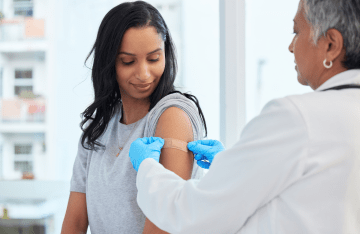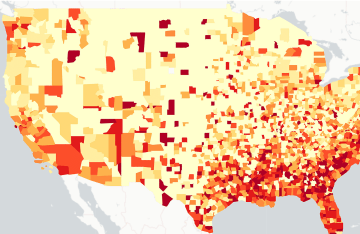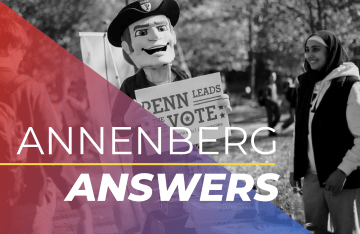LGBTQ Teens Nearly Twice As Likely To Vape Marijuana As Their Peers
High schoolers who identify as LGBTQ are at greater risk of vaping cannabis than their heterosexual peers, according to research from Professor Andy Tan and colleagues.

Teen vaping is a pressing health concern in the United States — more than 2.5 million young people reported using a vape pen in 2022. Increasingly, teens are using vapes to smoke cannabis, not just tobacco.
A recent study found that some teenagers are more susceptible to vaping cannabis than others. A survey of more than 28,000 U.S. high schoolers revealed that, in 2022, LGBTQ high schoolers were 1.6 times to twice as likely as their heterosexual peers to vape cannabis products.
Although recreational cannabis is being legalized across states in the U.S. for adults, vaping cannabis is not a harmless behavior for teens, says Andy Tan, Associate Professor of Communication at the Annenberg School for Communication and co-author of the study with colleagues at Stanford University and Yale University.
Adolescence is a crucial time for brain development and many of the cannabis products used in vapes (liquids and concentrates) contain notably high concentrations of tetrahydrocannabinol (THC), the main psychoactive chemical in cannabis. Vaping such high concentrations of THC has been linked to acute psychotic events and other negative mental health effects in adolescents, the researchers say.
Curbing Vaping by LGBTQ Teens
The researchers, all public health scientists in substance control and prevention, say that lowering vaping among LGBTQ teens requires an “all-hands-on-deck approach” by pediatricians, parents, educators, and health departments.

“There are a few possible reasons why we see this increased rate of cannabis vaping among certain LGBTQ groups,” says Tan, director of the Health Communication & Equity Lab at Annenberg. “It is well-documented that early exposure to stress, such as stress from sexual orientation-based discrimination, bullying, and rejection by family, is related to teen substance use, which might be consistent with vaping cannabis.”
The researchers lay out a four-pronged approach to address the vaping epidemic among LGBTQ teens, which includes decreasing this stress, by educating parents, offering counseling, and addressing anti-LGBTQ bias and bullying in schools.
Clinicians & Pediatricians
For clinicians and pediatricians, they recommend a trauma-informed care framework to ensure practices are culturally relevant and affirming for LGBTQ teen patients. The researchers recommend that clinics and practices use LGBTQ-affirming forms and posters to signal that they honor and celebrate sexual and gender diversity and that pediatricians screen their LGBTQ teen patients for substance use including vaping cannabis and nicotine, and provide brief counseling and referral for cessation treatment along with mental health support as part of routine intake and health screening.
Parents & Guardians
The researchers recommend that parents and guardians of LGBTQ teens talk to their kids about the harms of vaping and cannabis use at an early age, ideally in middle school or earlier. Parents should have conversations with their teens to debunk myths around how cannabis/marijuana is not a “harmless” substance, they say, and share facts about the true harms of cannabis/marijuana.
Schools & Teachers
Schools and teachers should stay up to date on the latest vaping trends and devices, the researchers say, as well as provide on-campus resources for vaping prevention education, and increase funding towards mental health and counseling, for all students but especially those who identify as LGBTQ. Educators play an important role in creating an LGBTQ-affirming environment, preventing, and addressing anti-LGBTQ bias and bullying in schools, they say.
“Schools are an opportune place for vaping prevention and education,” says the study’s lead author Jessica Liu, Postdoctoral Scholar with the REACH Lab at Stanford Pediatrics. “As adolescents spend most of their time alongside their peers in a school setting. There are free school-based vaping prevention programs available for educators, including the Stanford Tobacco Prevention Toolkit.”
State & Local Health Departments
State and local health departments should prioritize funding for prevention-oriented research for LGBTQ teens who are at higher risk of vaping cannabis, the researchers say. Youth anti-vaping programs and campaigns should incorporate messages that are culturally relevant for LGBTQ teens and health departments should also address structural factors of LGBTQ youth turning to vaping cannabis and substance use including expanding services to address LGBTQ youth homelessness, they say.
“Tobacco regulatory agencies should also be aware that vaping devices could be used for cannabis administration, particularly sexual minority youth," adds study co-author Juhan Lee, a postdoctoral associate in the Department of Psychiatry at Yale University School of Medicine. "Continuous monitoring and regulation on tobacco and cannabis marketing, potentially targeting sexual minority youth, are warranted."
The study, “Vaping of Cannabis, Cannabidiol, and Synthetic Cannabis Among US Sexual Minority Youths” was published in JAMA Network Open and authored by Jessica Liu, Andy S. L. Tan, and Juhan Lee.



